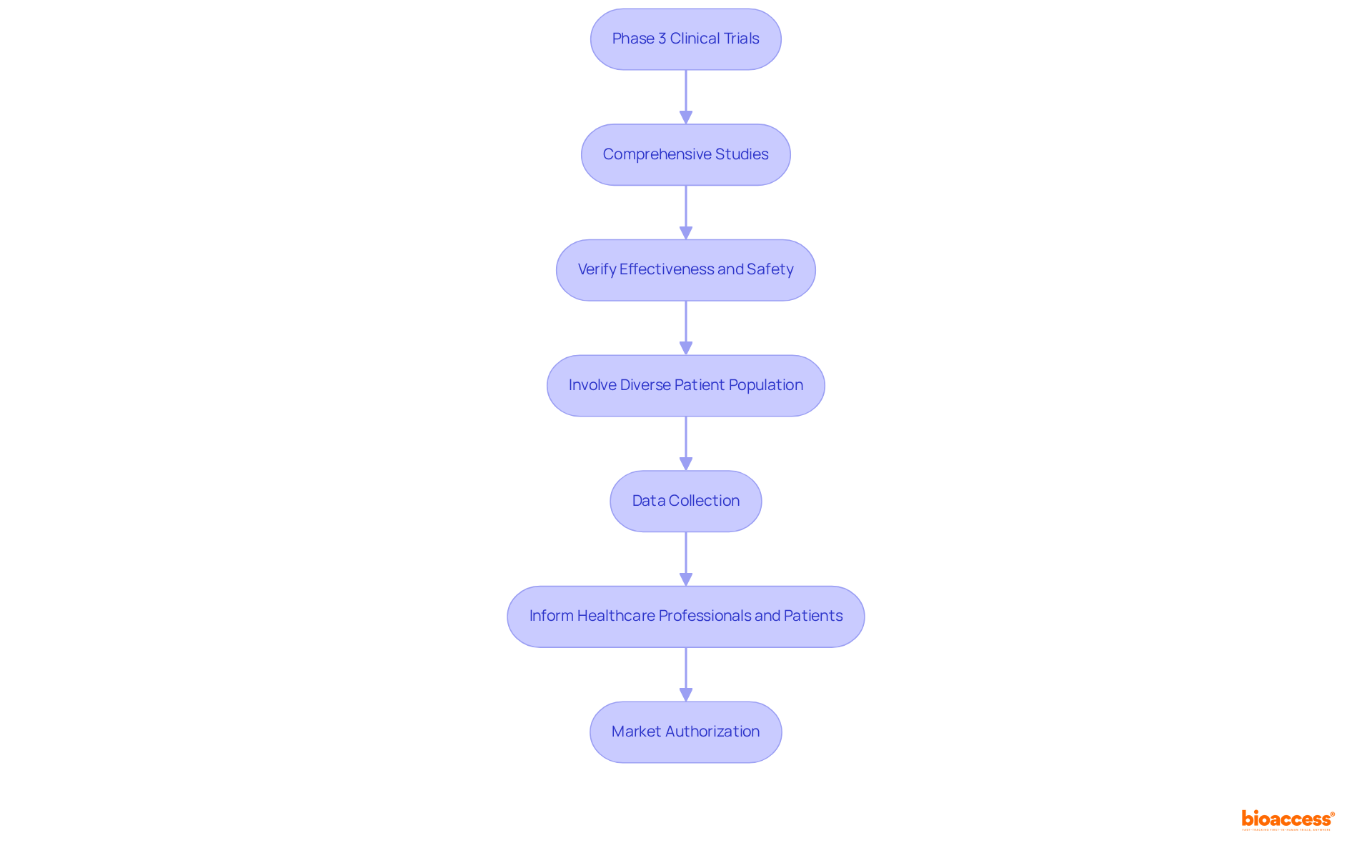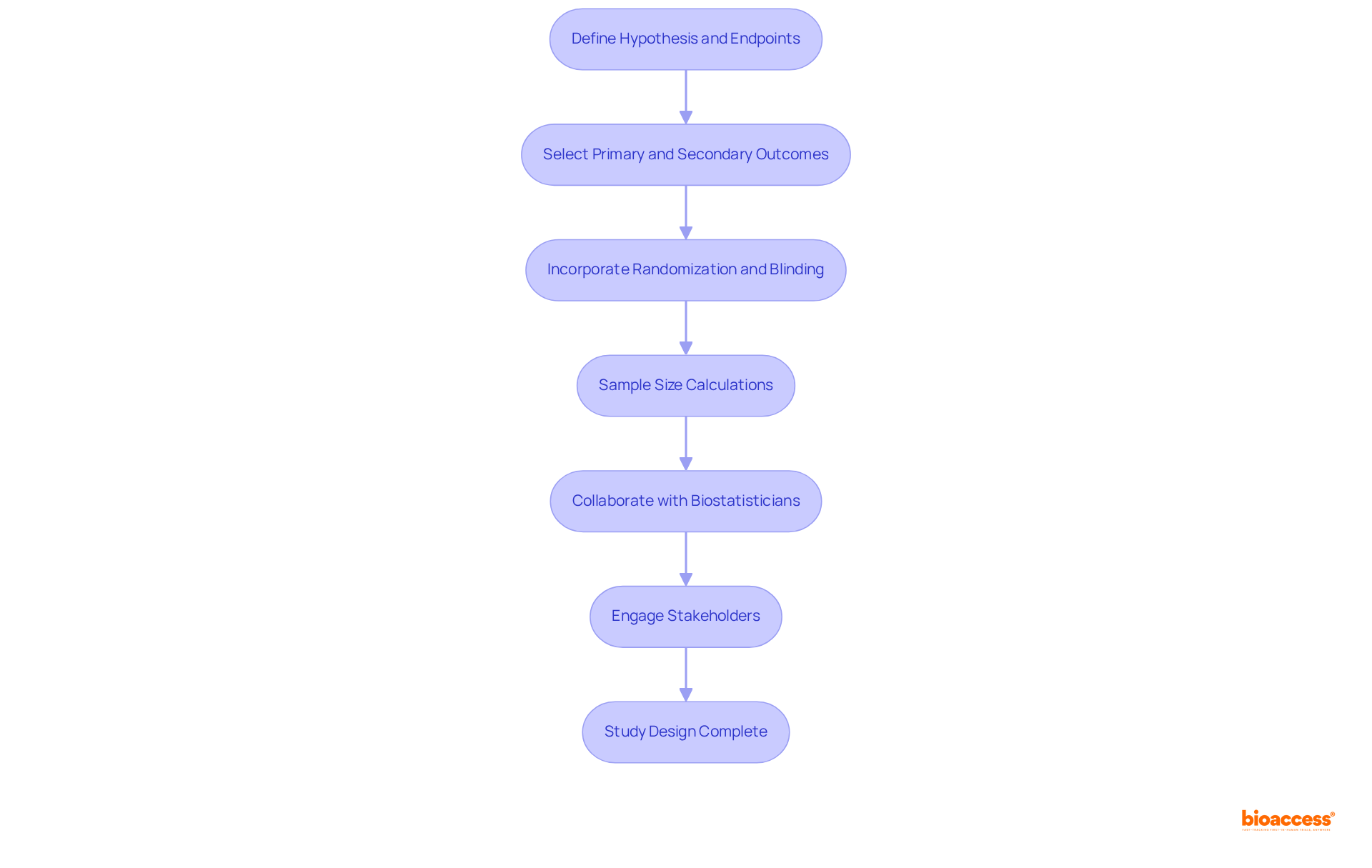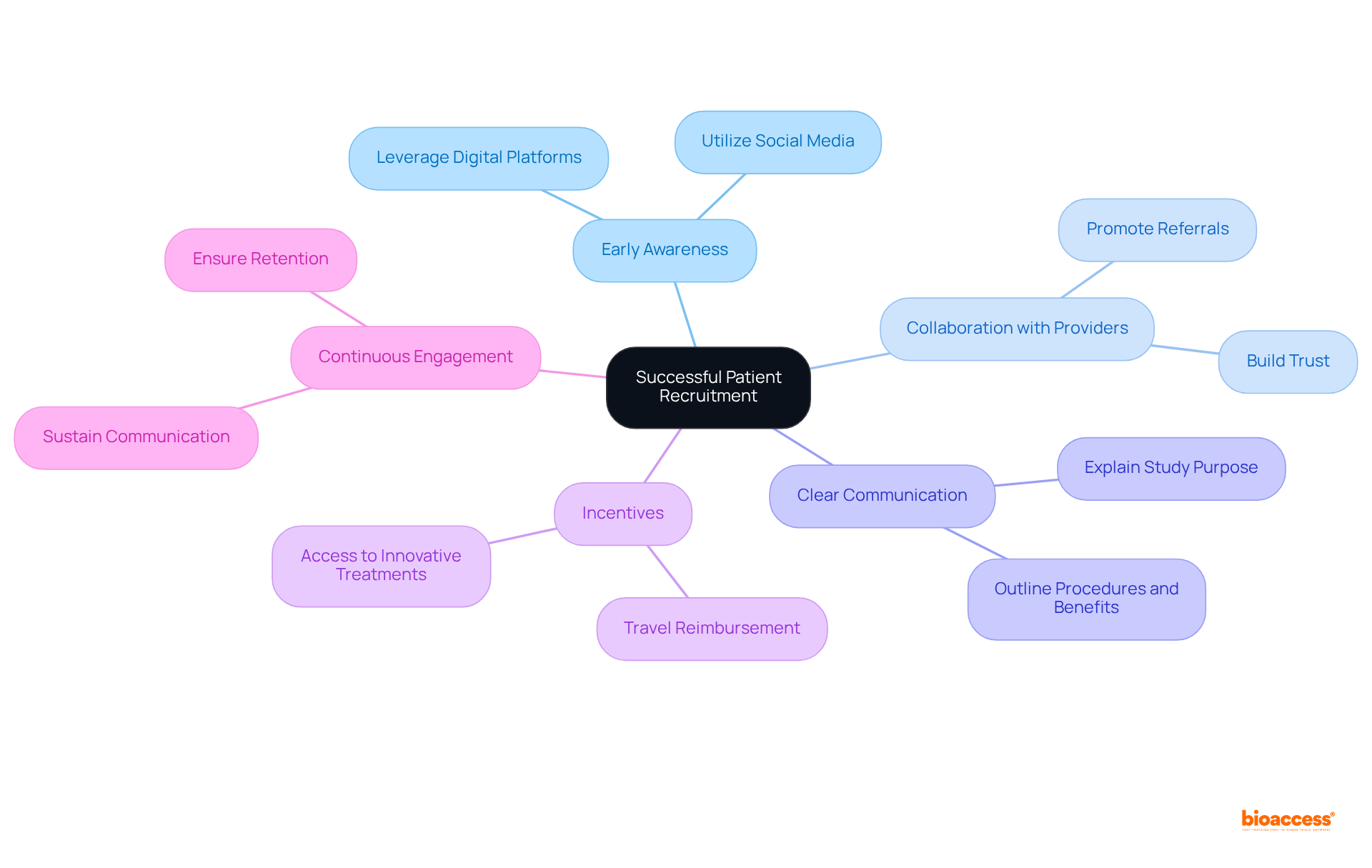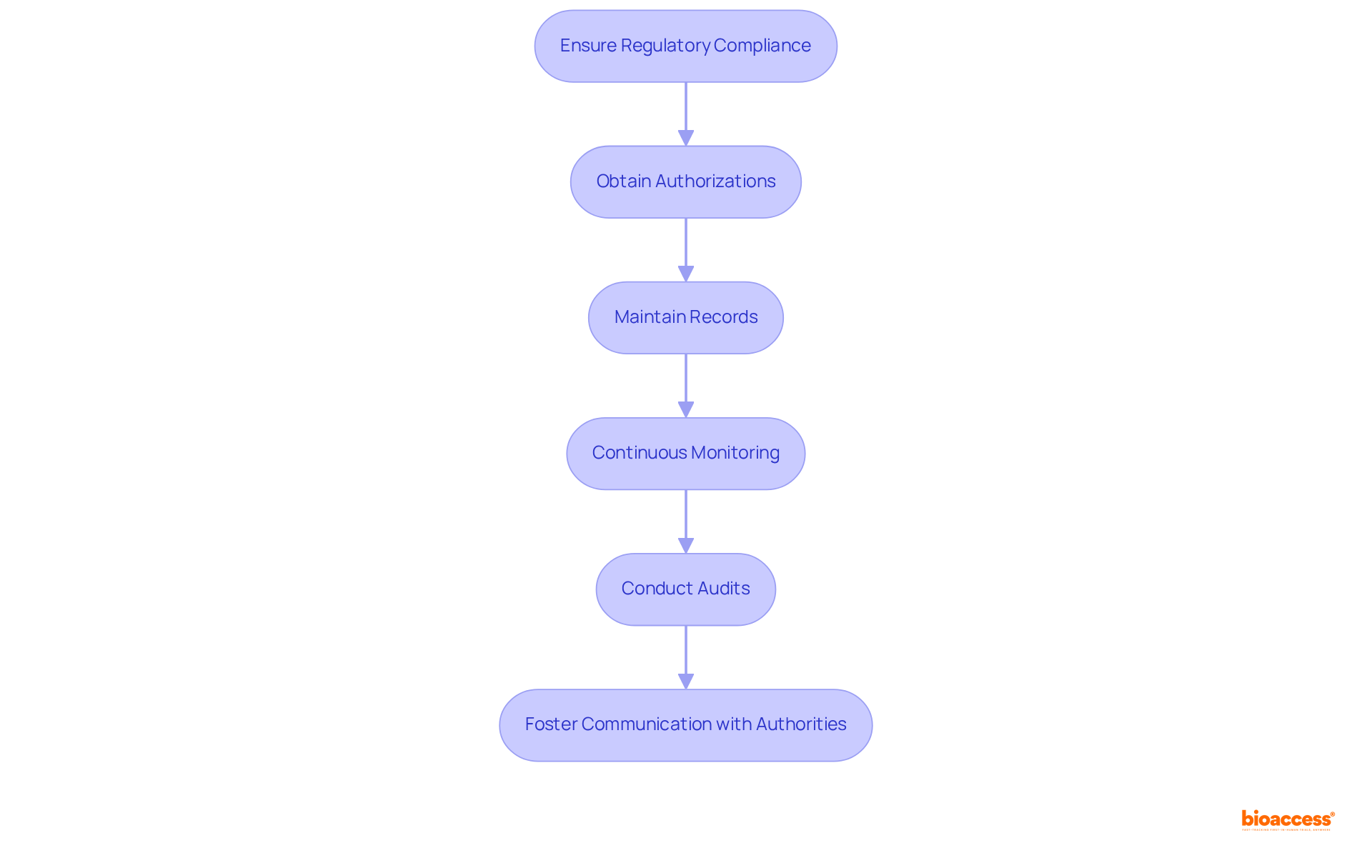


Phase 3 clinical development stands as a pivotal step in verifying the effectiveness and safety of medical interventions prior to regulatory approval and market entry. This article underscores the necessity of meticulous planning, robust patient recruitment strategies, and unwavering adherence to regulatory compliance. Such measures are essential to ensure successful trial outcomes that ultimately propel medical innovation forward. By addressing these critical elements, stakeholders can significantly enhance the likelihood of successful clinical trials, fostering advancements that benefit both healthcare providers and patients alike.
Phase 3 clinical trials represent a pivotal milestone in the journey of medical innovation, serving as the final proving ground for new treatments before they can reach patients. These extensive studies not only validate the safety and efficacy of interventions across diverse populations but also significantly influence healthcare decisions. However, the path to successful trial outcomes is laden with challenges, ranging from designing robust study protocols to ensuring effective patient recruitment and maintaining regulatory compliance.
What strategies can researchers implement to navigate these complexities and bolster the likelihood of success in Phase 3 clinical development?
Phase 3 clinical development represents a pivotal stage in the clinical research landscape, as it involves comprehensive studies designed to verify the effectiveness and safety of a solution across a diverse patient population. Typically involving hundreds to thousands of participants, these studies aim to provide conclusive evidence that the intervention performs as anticipated. The significance of phase 3 clinical development cannot be overstated; it represents the final hurdle before a drug or device can be submitted for regulatory approval. A successful conclusion to these assessments can lead to market authorization, enabling the remedy to reach those in need.
Moreover, the data collected during Stage 3 trials is essential for informing healthcare professionals and patients about the benefits and risks associated with the intervention, thereby enhancing clinical decision-making. Current statistics underscore the critical role of phase 3 clinical development in the drug approval process, showcasing a notable success rate that highlights their contribution to advancing medical innovation. Recent developments in the field stress the ongoing commitment to enhancing the effectiveness and safety of interventions through rigorous phase 3 clinical development evaluations, ensuring that new therapies meet the highest standards before becoming available to the public.

Creating successful phase 3 clinical development studies necessitates a clear hypothesis and well-defined endpoints. Researchers must select suitable primary and secondary outcomes that align with the intervention's intended use. The study design should incorporate randomization, blinding, and control groups to minimize bias and enhance the reliability of results.
Critical to this process are sample size calculations, which ensure the study is adequately powered to detect meaningful differences between treatment groups. Collaborating with biostatisticians during the planning phase refines these elements, ensuring statistical rigor. Furthermore, engaging stakeholders—including regulatory bodies and patient advocacy groups—early in the design process can provide valuable insights and foster support for the study.
This comprehensive approach not only bolsters the study's credibility but also aligns it with best practices in clinical research. Moreover, bioaccess® is committed to diverse research, including Early-Feasibility Studies and First-In-Human Studies, offering customized clinical study management services.
Utilizing tools like the ART suite developed by bioaccess® assists researchers in calculating optimal sample sizes, ensuring that the study design adheres to best practices in clinical research. Leveraging bioaccess®'s expertise in feasibility studies, site selection, compliance evaluations, experimental setup, import permits, project management, and reporting can significantly enhance the efficiency and success of phase 3 clinical development, particularly in the realm of medical device research in Latin America.

Effective participant enrollment for phase 3 clinical development necessitates a comprehensive approach. Capturing the attention of the target group early is critical; leveraging digital platforms and social media significantly enhances outreach and raises awareness about the study. Collaborating with healthcare providers and advocacy organizations not only promotes referrals but also fortifies trust among potential participants. Clear communication concerning the study's purpose, procedures, and potential benefits is vital to foster participation.
Moreover, offering incentives—such as travel reimbursement or access to innovative treatments—can further motivate patients to enroll. Sustaining continuous communication with participants throughout the study is essential for retention and ensuring its successful completion.
With over 90% of prospective candidates failing to enroll, addressing these factors can dramatically improve recruitment outcomes and enhance the success of phase 3 clinical development.

Ensuring regulatory compliance in phase 3 clinical development studies is paramount, demanding strict adherence to guidelines established by regulatory authorities such as the FDA and EMA. This process necessitates obtaining essential authorizations prior to the commencement of the study and maintaining meticulous records throughout the research. Continuous monitoring is crucial for the prompt identification and resolution of potential issues, thereby safeguarding participant safety and data integrity.
Establishing a robust data management system facilitates real-time monitoring of progress, enhancing oversight and responsiveness. Regular audits and inspections, both internal and external, further reinforce compliance and instill confidence among stakeholders. Moreover, fostering open communication with regulatory authorities not only clarifies expectations but also promotes smoother interactions throughout the process.
As organizations increasingly acknowledge the significance of compliance, the integration of continuous monitoring practices has become essential for optimizing trial outcomes and ensuring adherence to the latest guidelines for phase 3 clinical development.

Phase 3 clinical trials stand as a cornerstone of the drug development process, marking the final phase before a new treatment can secure regulatory approval. These trials validate not only the safety and effectiveness of interventions across diverse populations but also play a crucial role in informing healthcare decisions and advancing medical innovation. The successful execution of phase 3 trials is essential for bringing new therapies to market, ultimately benefiting patients in need.
This article outlines several key strategies for mastering phase 3 clinical development:
As the landscape of clinical research continues to evolve, embracing these best practices in phase 3 clinical trials becomes increasingly vital. Stakeholders are encouraged to prioritize:
By doing so, the medical community can continue to innovate and provide patients with safe, effective treatments that improve health outcomes and quality of life.
What are Phase 3 clinical trials?
Phase 3 clinical trials are comprehensive studies designed to verify the effectiveness and safety of a solution across a diverse patient population, typically involving hundreds to thousands of participants.
Why are Phase 3 clinical trials important?
They represent the final hurdle before a drug or device can be submitted for regulatory approval, providing conclusive evidence that the intervention performs as anticipated and leading to market authorization.
How do Phase 3 trials contribute to healthcare?
The data collected during Phase 3 trials informs healthcare professionals and patients about the benefits and risks associated with the intervention, enhancing clinical decision-making.
What is the success rate of Phase 3 clinical trials?
Current statistics indicate a notable success rate for Phase 3 clinical development, showcasing their critical role in the drug approval process and advancing medical innovation.
What is the ongoing commitment in Phase 3 clinical development?
There is a commitment to enhancing the effectiveness and safety of interventions through rigorous evaluations in Phase 3 clinical development, ensuring new therapies meet the highest standards before becoming available to the public.